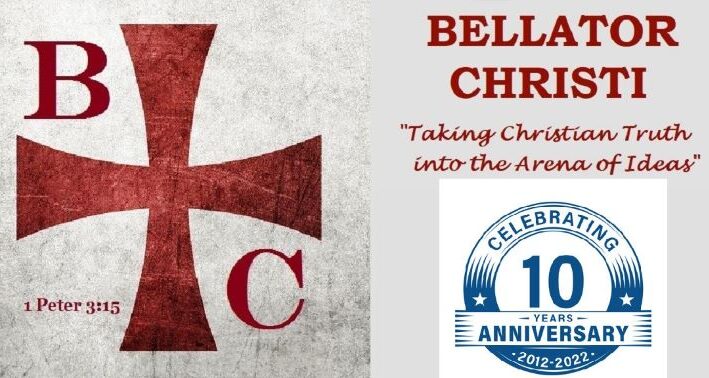Isaiah is the theological masterpiece of the Old Testament. It is in Isaiah that one finds the powerful so-called “Servant Songs” which address the future Messiah. Isaiah’s prophecies span the course of several centuries. Due to the timeframe of Isaiah’s prophecies, many textual critics have claimed that Isaiah son of Amoz could not have written or prophesied all of the prophecies contained within the book. This has led some to posit that Isaiah consists of three books written by three authors compiled together under the heading “Isaiah.” Such critics claim that chapters “1-39 were written by ‘Isaiah of Jerusalem’ and 40-66 (or 40-55) by an ‘unknown prophet of the Exile’” (LaSor, et. al., Old Testament Survey, 282). Some divide Isaiah into three books: the so-called proto-Isaiah (1-39) written by Isaiah of Jerusalem; deutero-Isaiah (40-55) written by an unknown prophet; and trito-Isaiah (56-66) written by an exilic prophet. While many critical scholars accept this view, a growing number of scholars are beginning to reject that notion and accept the unity of the book of Isaiah. I, for one, accept the unity of Isaiah for the following reasons.
Unity Seen through Early Acceptance of Isaiah as a Whole
From the earliest times, the book of Isaiah has been accepted as a unified whole. In the Great Scroll of Isaiah, one of the Dead Sea Scrolls at Qumran (1QIsa) “makes not the slightest break at the end of chapter 39” (LaSor, et. al., Old Testament Survey, 290). Jesus and the early church accepted Isaiah as a unified book as they quoted from the book in several places without giving any reference to multiple authors. If early Jews and early Christians accepted a unified Isaiah, one would need to find overwhelming evidence to the contrary to suggest otherwise, evidence that this writer does not find.
Unified Theological Concepts
Isaiah addresses several major theological concepts which are united within the entire book of Isaiah. LaSor and company denote that “Several dozen parallels in wording, concepts, and literary images have been identified to demonstrate the linkage between the two halves of the book” (LaSor, et. al., Old Testament Survey, 283). Barker and Kohlenberger demonstrate that “Isaiah’s temple vision (ch. 6) of the thrice-holy God deeply influenced his whole prophetic career and his theology” (Barker & Kohlenberger, EBC, 1043). Isaiah notes the grandeur of God as the angels call to one another “Holy, holy, holy is the LORD Almighty; the whole earth is full of his glory” (Isaiah 6:3).[1] This theme is seen throughout the book of Isaiah. Barker and Kohlenberger denote that Isaiah “speaks of God as Creator both of the universe (40:26; 42:5; 48:12-13) and of his people, Israel (43:1, 15). He has a vision of the whole earth full of the knowledge of the Lord (11:9) and even of a new heaven and a new earth (65:17; 66:22)” (Barker & Kohlenberger, EBC, 1043). Hope and forgiveness are constantly seen throughout the book of Isaiah, from 1:18-19, 30:18-19, and ultimately through the suffering servant in 52:13-53:12. These theological concepts are not broken but flood the entirety of the book of Isaiah.
Unified Eschatological Concepts
As the theology is unified in Isaiah, so are the eschatological concepts united in Isaiah. Isaiah looks to a day when God will deliver the land of Israel and the people of God from the problems of sin. In chapter 27, Isaiah speaks of a day when “Jacob’s guilt will be atoned for, and this will be the full fruit of the removal of his sin” (27:9). Later in chapter 53, Isaiah speaks of one who “took up our pain and bore our suffering” (53:4). The prophet goes on to say, concerning this servant, that “he was pierced for our transgressions, he was crushed for our iniquities; the punishment that brought us peace was on him, and by his wounds we are healed” (53:5). Finally, the prophet looks to a day when God would create a “new heavens and [a] new earth” (66:22). The eschatology is united in demonstrating that a Messiah would come and establish a new covenant and that new covenant would bring forth a final new creative order.
Unity Promoted by Predictive Evidence
The greatest problem that opponents to Isaianic unity hold is the incredibly accurate predictive elements that Isaiah holds. However, this should not be surprising. Jeremiah accurately predicted that Cyrus would allow the exilic community to come back to Israel. Ezra records that “In the first year of Cyrus king of Persia, in order to fulfill the word of the LORD spoken by Jeremiah, the LORD moved the heart of Cyrus king of Persia” (Ezra 1:1). Cyrus would allow the exiles to return and rebuild Jerusalem. However, Cyrus did so as Jeremiah had prophesied that he would do. Jeremiah was clearly written earlier than Ezra and far before Cyrus came to reign. Thus, if Jeremiah could accurately pinpoint future details, then why not Isaiah?
Conclusion
It may be that the book of Isaiah had redactors who formulated the book. LaSor and company denote that “A reasonable possibility is that Isaiah’s messages were collected and preserved by his disciples and later edited and put into written form” (LaSor, et. al., Old Testament Survey, 285). However, it is just not necessary to postulate that multiple writers constructed the book of Isaiah over a vast period of time. In fact, as LaSor and company denote, “All of the elements of Isaiah’s theology are found implicitly, at least, in the eighth-century vision of these acts” (LaSor, et. al., Old Testament Survey, 301). Therefore, this writer holds that Isaiah is an amazing unitary work by the prophet Isaiah of Jerusalem which was formulated and pieced together by his disciples.
Bibliography
Barker, Kenneth L., and John R. Kohlenberger, III. The Expositor’s Bible Commentary: Old Testament, Abridged Edition. Grand Rapids: Zondervan, 1994.
LaSor, William Sanford, David Allan Hubbard, and Frederic William Bush. Old Testament Survey: The Message, Form, and Background of the Old Testament, 2nd Edition. Grand Rapids; Cambridge, UK: Wm. B. Eerdmans, 1996.
[1] All Scripture, unless otherwise noted, comes from the New International Version (Grand Rapids: Biblica, 2011).
Copyright March 2015. Brian Chilton.






Trito-Isaiah was on its death bed when I was in seminary decades ago. I find it remarkable that John Oswalt’s magnum opus in the New International Commentary on the Old Testament is not mentioned. Prof. Oswalt argues strongly for the unity of Isaiah.
You are correct. However, the multiple Isaiah theory, or multiple author theory, has not died and is still being espoused in many areas and still must be addressed. I am not familiar with Professor Oswalt’s commentary, but will certainly check out his work for future references.
Blessings,
Pastor Brian